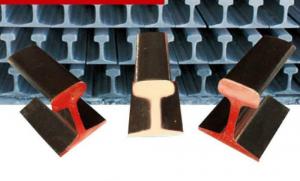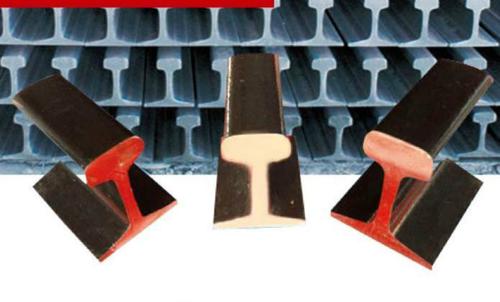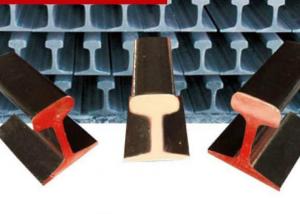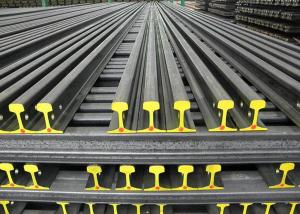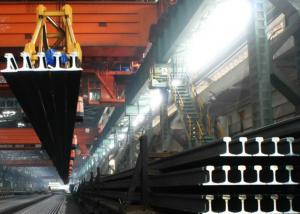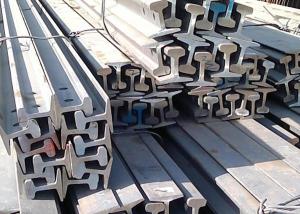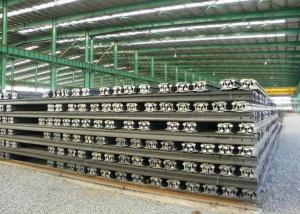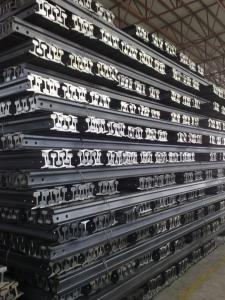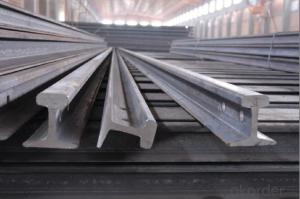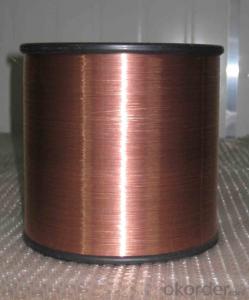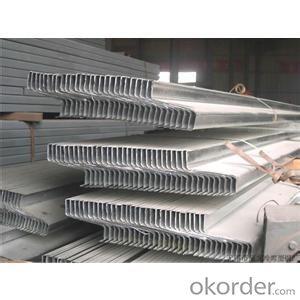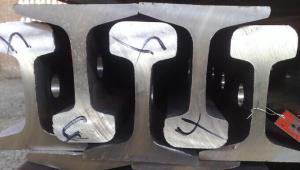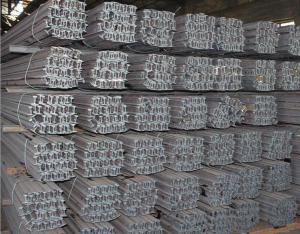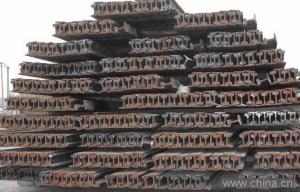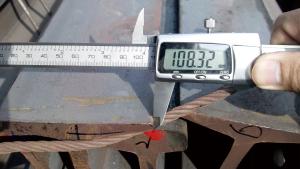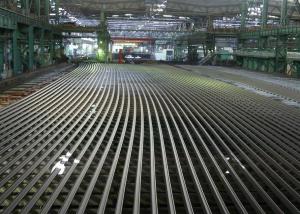Steel Heavy Rail with Multiple Specifications
- Loading Port:
- China main port
- Payment Terms:
- TT or LC
- Min Order Qty:
- 25 m.t.
- Supply Capability:
- 100000 m.t./month
OKorder Service Pledge
OKorder Financial Service
You Might Also Like
Product Description of Steel Heavy Rail with Multiple Specifications:
Alloy No | Grade | Element(%) | ||||
C
| Mn | S
| P
| Si
| ||
Q235 |
B
|
0.12—0.20 |
0.3—0.7 |
≤0.045 |
≤0.045
|
≤0.3
|
Invoicing on theoretical weight or actual weight as customer request
Payment terms: 30% advance payment by T/T, 70% payment against the copy of the B/L; 100% L/C at sight, etc.
Usages of Steel Heavy Rail with Multiple Specifications:
Light rail is mainly used in forest region, mines, factories and construction sites laid of the place such as temporary transport line and light motorcycles with line. Be widely used for railway, subway, transportation track, express, curve way, tunnel way and so on.
Packaging & Delivery of Steel Heavy Rail with Multiple Specifications:
1. Packing: it is nude packed in bundles by steel wire rod
2. Bundle weight: not more than 3.5MT for bulk vessel; less than 3 MT for container load
3. Marks:
Color marking: There will be color marking on both end of the bundle for the cargo delivered by bulk vessel. That makes it easily to distinguish at the destination port.
Tag mark: there will be tag mark tied up on the bundles. The information usually including supplier logo and name, product name, made in China, shipping marks and other information request by the customer.
If loading by container the marking is not needed, but we will prepare it as customer request.
4. Transportation: the goods are delivered by truck from mill to loading port, the maximum quantity can be loaded is around 40MTs by each truck. If the order quantity cannot reach the full truck loaded, the transportation cost per ton will be little higher than full load.
5. Delivered by container or bulk vessel
6. Delivery Time: All the Hot Rolled Steel Rail will be transpoted at the port of Tianjin, China within 30 days after receiving the advance payment by T/T or the orginal L/C at sight.
Inspection of Steel Heavy Rail with Multiple Specifications:
We will send the MTC of the factory to the clients dirrectly which contain the anlisis of the heat, chemiqul composition, phisical characteristicas, etc.
And our inspectors will arrive at the factory to meke the inspection of the size, length, weight and quantity before the transportation from the factory.
FAQ:
Q1: Why buy Materials & Equipment from OKorder.com?
A1: All products offered byOKorder.com are carefully selected from China's most reliable manufacturing enterprises. Through its ISO certifications, OKorder.com adheres to the highest standards and a commitment to supply chain safety and customer satisfaction.
Q2: How do we guarantee the quality of our products?
A2: We have established an advanced quality management system which conducts strict quality tests at every step, from raw materials to the final product. At the same time, we provide extensive follow-up service assurances as required.
Q3: How soon can we receive the product after purchase?
A3: Within three days of placing an order, we will begin production. The specific shipping date is dependent upon international and government factors, but is typically 7 to 10 workdays
Images:
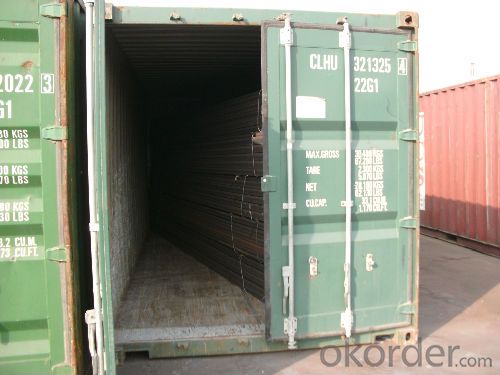
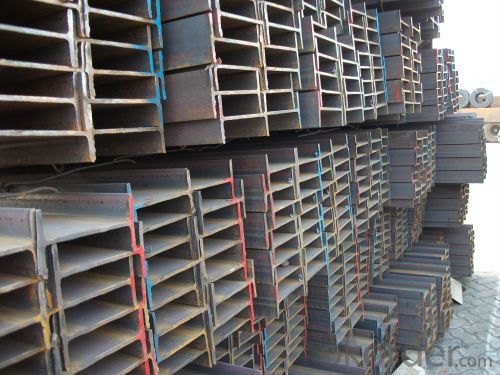
- Q: How do steel rails reduce maintenance costs for railways?
- There are several ways in which steel rails can decrease maintenance expenses for railways. To start, steel is an extremely sturdy material that can endure heavy loads and harsh weather conditions. This durability allows steel rails to have a longer lifespan in comparison to materials like wood or concrete. Consequently, railways do not have to replace steel rails as frequently, resulting in cost savings in terms of materials and labor. Additionally, steel rails possess exceptional resistance to wear and tear. Trains exert immense pressure on the rails, causing them to deteriorate over time. However, steel's hardness and strength make it more resilient to this wear, reducing the necessity for frequent repairs or replacements. As a result, maintenance costs for the railway infrastructure are lowered. Furthermore, steel rails have a smooth surface and consistent dimensions, which facilitate smooth and efficient train operations. A smooth rail surface reduces friction between the wheels and the track, resulting in less wear and tear on both components. This diminishes the need for maintenance and replacement of both the rails and the train wheels, leading to cost savings for the railway. Moreover, steel rails require less maintenance in terms of cleaning and debris removal. Their smooth surface allows for easy elimination of debris and materials that may accumulate on the tracks, minimizing the risk of track obstructions and train derailments. This reduces the frequency of maintenance activities, saving time and resources for the railway operator. Overall, the utilization of steel rails in railways aids in reducing maintenance costs by providing durability, wear resistance, smooth operation, and ease of maintenance. These aspects contribute to a longer rail lifespan, fewer repairs, and less frequent replacement needs. By investing in steel rails, railways can achieve significant cost savings in the long run, leading to more efficient and sustainable operations.
- Q: How do steel rails perform under heavy axle loads?
- Under heavy axle loads, steel rails are engineered to withstand the pressure and perform exceptionally well. The strength and durability of steel make it an ideal choice for rail infrastructure. When faced with heavy axle loads, steel rails evenly distribute the weight along their entire length, minimizing the impact on the track structure. One major advantage of steel rails is their ability to bear heavy loads. They can handle the weight of heavy trains without experiencing significant deformation or damage. This is especially important in modern railway systems, where freight trains and high-speed trains often carry heavier axle loads. Additionally, steel rails display excellent resistance to fatigue. Fatigue failure occurs when materials are repeatedly loaded and unloaded, leading to cracks and fractures over time. Nevertheless, steel rails are specifically designed to withstand the cyclic loading associated with heavy axle loads, ensuring long-term durability and performance. Moreover, steel rails offer exceptional wear resistance. The constant contact between the steel wheel and the rail can result in gradual wear. Nevertheless, steel rails are manufactured using high-quality steel alloys that provide resistance against wear and reduce the need for frequent maintenance. To ensure optimal performance under heavy axle loads, regular inspection and maintenance of steel rails are essential. This includes monitoring the condition of the rails, checking for signs of wear or damage, and promptly addressing any maintenance issues. By adhering to proper maintenance protocols, steel rails can continue to perform reliably and safely, even under heavy axle loads.
- Q: What are the different types of rail fastening systems used with steel rails?
- There are several types of rail fastening systems used with steel rails, including clips, e-clips, pandrol clips, resilient pads, and bolted plates. These systems are designed to secure the rail to the sleepers or ties, ensuring stability and reducing track maintenance.
- Q: Are steel rails affected by changes in soil conditions?
- Yes, steel rails can be affected by changes in soil conditions. The stability and integrity of railroad tracks depend on the quality and characteristics of the underlying soil. Changes in soil conditions, such as soil settlement, expansion, or erosion, can impact the rail alignment and lead to track irregularities. For example, if the soil undergoes settlement or erosion, it can cause the rail to sink or become misaligned, resulting in track deformations or even derailments. Additionally, changes in soil moisture content can lead to soil expansion or contraction, which can further affect the stability of the rails. Therefore, it is crucial for rail infrastructure engineers to assess and monitor the soil conditions to ensure the safe and efficient operation of steel rails.
- Q: How is the quality of steel rails tested?
- The quality of steel rails is tested through a variety of methods, including visual inspection, ultrasonic testing, magnetic particle inspection, and hardness testing. These techniques help identify any defects, such as cracks, flaws, or inconsistencies in the rail's composition or structure. Additionally, the rails may undergo endurance testing to ensure they can withstand the required loads and stresses over time. These stringent testing processes ensure the high quality and safety of steel rails used in various applications, such as railways and infrastructure projects.
- Q: Are steel rails used in mining operations?
- Yes, steel rails are commonly used in mining operations for the transportation of heavy loads and equipment. These rails provide durability, stability, and a smooth surface for efficient movement of mining carts or vehicles within the mine.
- Q: Are there any alternative materials to steel for railway tracks?
- Yes, there are alternative materials to steel for railway tracks. Some of the alternatives include concrete, composite materials, and hybrid systems. These materials offer benefits such as reduced maintenance, increased durability, and improved noise reduction. However, their suitability depends on various factors such as the specific requirements of the railway system and the environmental conditions in which they will be used.
- Q: What are the potential dangers of steel rails?
- The potential dangers of steel rails include derailments, which can result in accidents and injuries, as well as damage to the tracks caused by wear and tear, extreme weather conditions, or improper maintenance. Additionally, steel rails can become a hazard if they are not properly secured, leading to track misalignment, train collisions, or even catastrophic accidents.
- Q: How do steel rails handle changes in track alignment due to track settlement and vertical movement caused by soil consolidation?
- Steel rails are designed to be flexible and durable, allowing them to handle changes in track alignment caused by track settlement and vertical movement due to soil consolidation. The rails have a certain degree of elasticity, which enables them to adjust and accommodate these changes without compromising the stability and integrity of the track. Additionally, proper maintenance and regular inspections are crucial in detecting and addressing any deviations in alignment promptly to ensure safe and efficient train operations.
- Q: Can steel rails be used in areas with high moisture or humidity?
- Yes, steel rails can be used in areas with high moisture or humidity. Steel is known for its strength and durability, making it a popular choice for railway tracks. However, in areas with high moisture or humidity, there is a higher risk of corrosion and rusting. To mitigate this risk, steel rails are often coated with protective layers, such as zinc or paint, to prevent direct exposure to moisture. Additionally, regular maintenance and inspections are crucial to identify and address any signs of corrosion or rust. By implementing these measures, steel rails can effectively withstand high moisture or humidity and maintain their structural integrity for a prolonged period.
Send your message to us
Steel Heavy Rail with Multiple Specifications
- Loading Port:
- China main port
- Payment Terms:
- TT or LC
- Min Order Qty:
- 25 m.t.
- Supply Capability:
- 100000 m.t./month
OKorder Service Pledge
OKorder Financial Service
Similar products
Hot products
Hot Searches
Related keywords
